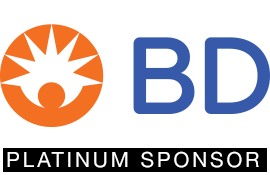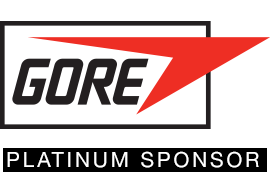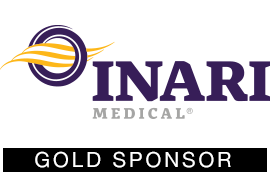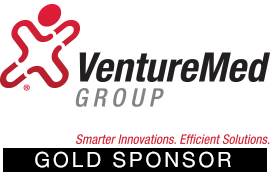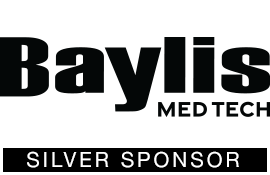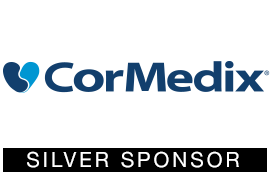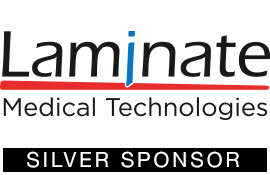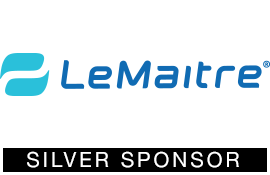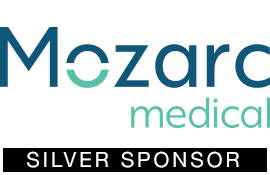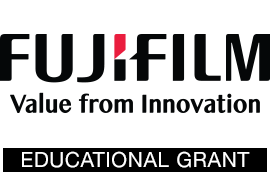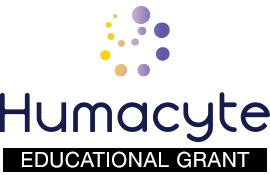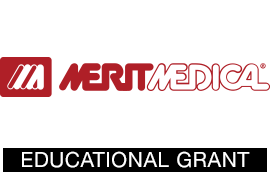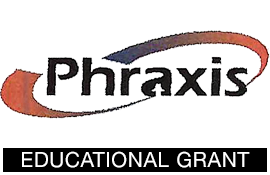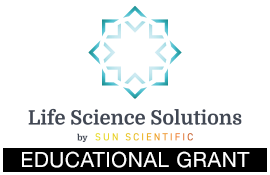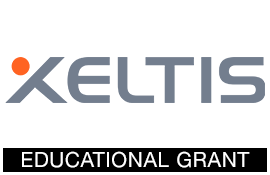2025 Practicum
 On behalf of the Vascular Access Society of the Americas, we extend this invitation for your participation in the Vascular Access Society of the Americas’ Hands-On Practicum on Hemodialysis Access that will be held on May 16-17, 2025, at Washington University School of Medicine in St. Louis, MO.
On behalf of the Vascular Access Society of the Americas, we extend this invitation for your participation in the Vascular Access Society of the Americas’ Hands-On Practicum on Hemodialysis Access that will be held on May 16-17, 2025, at Washington University School of Medicine in St. Louis, MO.
This will be a one-and-a-half-day activity enabling participants to obtain ‘Hands-On’ experience, observe live surgical/ interventional vascular access procedures and new methods, learn cannulation techniques, view demonstrations of emerging technology and share a platform for open discussions on various approaches to patients with vascular access problems with National and International leaders in the field.
We have developed an outstanding program for physicians that will include:
- Observation and discussion of surgical and interventional vascular access procedures
- Utilization of new devices and learning techniques in animals and cadaver limbs in the laboratory
- Hands on experience with techniques of implanting various graft materials and fistula creation
- Hands training with the use of color duplex ultrasound in vascular access
Allied Health Professionals
Advanced Practice Professionals, RN, LPN, Dialysis Patient Care Technicians and Vascular Access Coordinators
Our excellent program for Nursing and Allied Health participants will include:
- Observation an discussion of live surgical and interventional procedures
- Physical examination skills for evaluating vascular access in ESRD volunteers
- Experience with the use of ultrasound to evaluate vascular access, including cannulation mapping.
- Hands on experience with the use of ultrasound to evaluate vascular access
- Learning cannulation techniques including ‘button hole’ using ‘fistula arm’ and simulators
In addition to these main activities all delegates will have ample opportunities to view and learn about new innovations, different interventional devices, graft materials, peritoneal dialysis catheters, dialysis needles, dialysis catheter, review catheter care and participate in related activities.
Thank You 2025 Practicum Sponsors
|
THURSDAY, MAY 15, 2025 |
|
|---|---|
|
06:00 AM - 09:00 PM |
Registration and Welcome Reception |
|
FRIDAY, MAY 16, 2025 |
|
|---|---|
|
06:30 AM - 07:15 AM |
Breakfast and Registration |
|
07:15 AM - 07:25 AM |
Welcome Address and Introduction |
|
07:35 AM - 07:45 AM |
Delegate Groups Escorted to their Respective Activity Arena. |
|
07:45 AM - 09:45 AM |
Physician Session I/Affiliate Staff Session I Additional Information TBD |
|
09:45 AM - 10:15 AM |
Refreshment Break |
|
10:15 AM - 12:15 PM |
Physician Session II/Affiliate Staff Session II Additional Information TBD |
|
12:15 PM - 01:00 PM |
Box Lunch (Exhibits area) |
|
01:00 PM - 03:00 PM |
Physician Session III/Affiliate Staff Session III Additional Information TBD |
|
03:00 PM - 03:30 PM |
Coffee Break (All Delegates) at Exhibits Area |
|
03:45 PM - 04:45 PM |
Vascular Access Clinic (All Delegates) |
|
04:45 PM |
Adjourn |
|
06:00 PM - 06:15 PM |
Busses Depart from Hotels for Dinner |
|
06:30 PM - 09:00 PM |
Dinner |
Physician Activities
Arena 1.
Delegates spend time in Surgical education laboratory with faculty honing and perfecting surgical and endovascular skills. Activity includes Vivarium and cadaver dissection including experience with exposure, fistula creation, graft placement, tunnelling techniques, fistulography, angioplasty, stent deployment, surfacer technology and HeRo grafts.
Arena 2.
This session will provide opportunity to view live surgical and interventional procedures related to vascular access while interacting with the surgeons/interventionalists and involving in an open discussion with our experienced faculty.
Arena 3.
This area will provide hands on training with use of duplex US and techniques of vessel mapping, access flow evaluation, managing access complications such as Aneurysm evaluation etc. using our ESRD volunteers. Ther also will be several virtual simulators to gain experience with cannulation, US guided and endovascular interventions.
Affiliated Staff Activities
Arena 4.
This area will have cadaver and simulation models related to vascular access, peritoneal dialysis access and cannulation. It will also have devices including various grafts and dialysis catheters along peritoneal and hemodialysis catheters.
Beside these activities all delegates will have ample opportunity to evaluate different graft materials, devices and tools used for dialysis access interventions, cannulation and all aspects of dialysis patient care.
Physician Activities
Station 1. (WISE Lab)
- Fresh cadaver limbs
- Dissect and explore anatomy of veins, arteries and nerves at snuff box, wrist, cubital fossa or axilla.
- AV fistula creation: snuff box, wrist, elbow
- AV graft placement: forearm loop, upper arm ‘U’ loop, upper arm ‘C’ loop
- Graft options: ePTFE, Composite grafts, biological grafts, Human Collagen matrix grafts
- Graft tunnelling techniques
- Pig models
- AV fistula creation: carotid to jugular, Hind limb (porcine thigh fistula)
- AV graft placement: Hind limb. Thigh loop, neck loop
- HeRo graft placement
- Pig models (Options with ‘c’ arm)
- AVG fistulogram
- Central vein imaging
- Thrombectomy techniques
- Angioplasty techniques
- Stent deployment
- Peritoneal dialysis catheter insertion; Cadaver and virtual models
- Open insertion
- Laparoscopic insertion
- Virtual training
Station 2 (EPNEC auditorium)
Live access cases: delegates will view and interact with surgeons and interventionalists performing vascular access surgery and interventions on patients – experience depends on cases being performed. Every session will have an opportunity to watch and interact with at least 2 or 3 procedures or more. Participants may choose to spend more time at this venue (miss other area rotation) if they chose to do so.
Arena 3 (EPNEC rooms)
Training with simulators and live patients access US evaluation.
- Learning basic US techniques
- US vessel mapping
- US evaluation of existing vascular access
- Maturation evaluation
- Evaluation of complications
- Virtual simulator training
- Hands on evaluation of devices and tools in vascular access
Affiliated staff activities
Station 1 (EPNEC)
Cadaver and simulation models for Vascular and peritoneal dialysis access
- What is beneath the skin? Anatomic limb model with artery, vein and nerves dissected
- Understanding AV access types
- AV graft anatomic locations
- AV catheter placement techniques
- AV catheter types
- PD catheter types and placement (cadaver model)
Station 2 (EPNEC auditorium)
Live access cases: delegates will view and interact with faculty who are involved in performing vascular access evaluation, surgery and interventions. Participant experience depends on cases being performed. Every session will have an opportunity to watch and interact with at least 2 or 3 procedures or more (participants may choose to miss other sessions and spend more time at this venue if they chose to do so).
Station 3 (EPNEC rooms)
Basic US, AV access evaluation, cannulation techniques
- Learning basic US
- US vessel mapping
- US evaluation of existing vascular access
- Maturation evaluation
- Evaluation of complications
- Cannulation simulators and techniques
|
SATURDAY, MAY 17, 2025 |
|
|---|---|
|
07:00 AM - 08:00 AM |
Breakfast Symposium |
|
08:10 AM - 10:20 AM |
Session 1
Moderators: TBD |
|
10:20 AM - 10:50 AM |
Break |
|
10:50 AM - 11:30 AM |
Session 2
Moderators: TBD |
|
11:30 AM - 12:40 AM |
Session 3
Moderators: TBD |
|
12:50 AM - 02:00 PM |
Session 4
|
